Related Research Articles
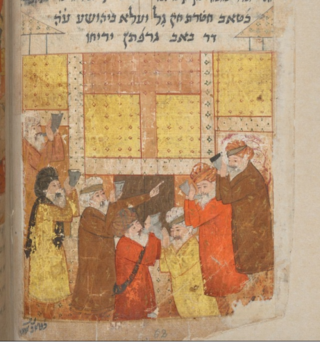
Judeo-Persian refers to both a group of Jewish dialects spoken by the Jews living in Iran and Judeo-Persian texts. As a collective term, Judeo-Persian refers to a number of Judeo-Iranian languages spoken by Jewish communities throughout the formerly extensive Persian Empire, including the Mountain and Bukharan Jewish communities.
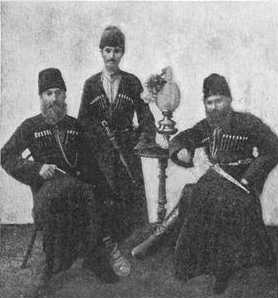
Mountain Jews or Caucasus Jews, also known as Juhuro,Juvuro,Juhuri,Juwuri, Juhurim,Kavkazi Jews or Gorsky Jews, are Jews of the eastern and northern Caucasus, mainly Azerbaijan, and various republics in the Russian Federation: Chechnya, Ingushetia, Dagestan, Karachay-Cherkessia, and Kabardino-Balkaria. The Mountain Jews comprise Persian-speaking Jewry along with the Jews of Iran, Afghanistan, and Central Asia. The Mountain Jews are the descendants of Persian Jews from Iran, and fall within the Mizrachi category of Jews. Mountain Jews took shape as a community after Qajar Iran ceded the areas in which they lived to the Russian Empire as part of the Treaty of Gulistan of 1813.
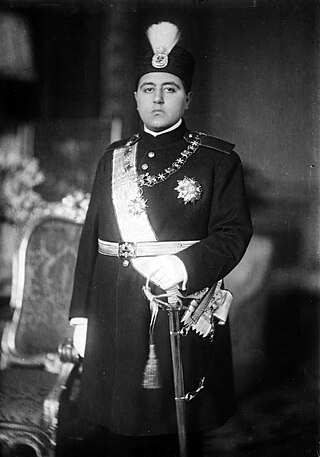
Ahmad Shah Qajar was Shah of Persia (Iran) from 16 July 1909 to 15 December 1925, and the last ruling member of the Qajar dynasty.
Mizrahi Jews, also known as Mizrahim (מִזְרָחִים) or Mizrachi (מִזְרָחִי) and alternatively referred to as Oriental Jews or Edot HaMizrach, are a grouping of Jewish communities comprising those who remained in the Land of Israel and those who existed in diaspora throughout and around the Middle East and North Africa (MENA) from biblical times into the modern era.

Kermanshah, is the capital of Kermanshah Province, located 525 kilometres from Tehran in the western part of Iran. According to the 2016 census, its population is 946,651.

Judeo-Tat or Juhuri is a traditional language of the Mountain Jews, primarily spoken in Azerbaijan, Dagestan, and Israel.

Bukharian is a Judeo-Persian dialect historically spoken by the Bukharan Jews of Central Asia. It is a Jewish dialect derived from — and largely mutually intelligible with — the Tajik branch of the Persian language.

Persian Jews or Iranian Jews constitute one of the oldest communities of the Jewish diaspora. Dating back to the biblical era, they originate from the Jews who relocated to Iran during the time of the Achaemenid Persian Empire. Books of the Hebrew Bible bring together an extensive narrative shedding light on contemporary Jewish life experiences in ancient Persia; there has been a continuous Jewish presence in Iran since at least the time of Cyrus the Great, who led the Persian army's conquest of the Neo-Babylonian Empire and subsequently freed the Judahites from the Babylonian captivity.
Judeo-Hamadani and Judeo-Borujerdi constitute a Northwestern Iranian language, originally spoken by the Iranian Jews of Hamadan and Borujerd in western Iran. Hamadanis refer to their language as ebri “Hebrew” or zabān-e qadim “old language.” Though not Hebrew, the term ebri is used to distinguish Judeo-Hamadani from Persian.
In 1920, Hamadan had around 13,000 Jewish residents. According to members of the community that Donald Stilo encountered in 2001-02, there were only eight people from the Jewish community left in Hamadān at the time, but others can still be found in Israel, New York City, and most predominantly in Los Angeles.
Judeo-Shirazi is a variety of Fars. Some Judeo-Shirazi speakers refer to the language as Jidi, though Jidi is normally a designation used by speakers of Judeo-Esfahani. It is spoken mostly by Persian Jews living in Shiraz and surrounding areas of the Fars Province in Iran.
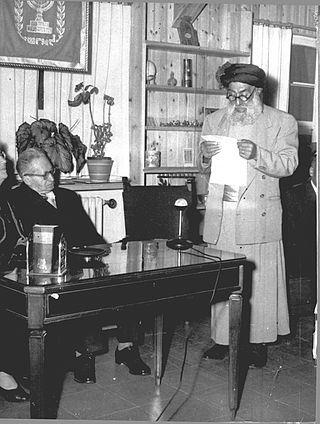
The Jews of Kurdistan are the Mizrahi Jewish communities from the geographic region of Kurdistan, roughly covering parts of northwestern Iran, northern Iraq, northeastern Syria and southeastern Turkey. Kurdish Jews lived as closed ethnic communities until they were expelled from Arab and Muslim states from the 1940s–1950s onward. The community largely spoke Judeo-Aramaic. As Kurdish Jews natively adhere to Judaism and originate from the Middle East, Mizrahi Hebrew is used for liturgy. Many Kurdish Jews, especially the ones who hail from Iraq, went through a Sephardic Jewish blending during the 18th century.
Habib Levy (1896–1984) is the author of Comprehensive History of the Jews of Iran: The Outset of the Diaspora.

The history of the Jews in Iran dates back to late biblical times. The biblical books of Chronicles, Isaiah, Daniel, Ezra, Nehemiah, contain references to the life and experiences of Jews in Persia. In the book of Ezra, the Persian kings are credited with permitting and enabling the Jews to return to Jerusalem and rebuild their Temple; its reconstruction was carried out "according to the decree of Cyrus, and Darius, and Artaxerxes king of Persia". This great event in Jewish history took place in the late 6th century BCE, by which time there was a well-established and influential Jewish community in Persia.
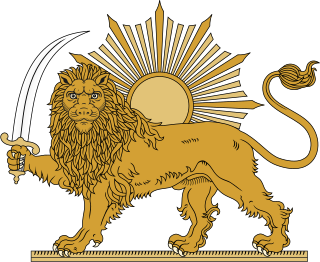
The Lion and Sun is one of the main emblems of Iran (Persia), and was an element in Iran's national flag until the 1979 revolution and is still commonly used by opposition groups of the Islamic Republic government. The motif, which illustrates ancient and modern Iranian traditions, became a popular symbol in Iran in the 12th century. The lion and sun symbol is based largely on astronomical and astrological configurations: the ancient sign of the sun in the house of Leo, which itself is traced back to Babylonian astrology and Near Eastern traditions.

The Tomb of Esther and Mordechai is a tomb located in Hamadan, Iran. Iranian Jews and Iranian Christians believe it houses the remains of the biblical Queen Esther and her cousin Mordechai, and it is the most important pilgrimage site for Jews and Christians in Iran. There is no mention of it in either the Babylonian or Jerusalem Talmud, and the Iranian Jewish tradition has not been supported by Jews beyond Iran.

The Judeo-Iranian languages are a number of related Jewish variants of Iranian languages spoken throughout the formerly extensive realm of the Persian Empire. Judeo-Iranian dialects are generally conservative in comparison with those of their Muslim neighbours. Judeo-Shirazi, for example, remains close to the language of Hafez.
Soi (Sohi) is one of the Central Iranian language varieties of Iran, one of five listed in Ethnologue that together have 35,000 speakers. It is closely related to Natanzi.

Qajar Iran, also referred to as Qajar Persia, the Qajar Empire, Sublime State of Persia, officially the Sublime State of Iran and also known as the Guarded Domains of Iran, was an Iranian state ruled by the Qajar dynasty, which was of Turkic origin, specifically from the Qajar tribe, from 1789 to 1925. The Qajar family took full control of Iran in 1794, deposing Lotf 'Ali Khan, the last Shah of the Zand dynasty, and re-asserted Iranian sovereignty over large parts of the Caucasus. In 1796, Agha Mohammad Khan Qajar seized Mashhad with ease, putting an end to the Afsharid dynasty. He was formally crowned as Shah after his punitive campaign against Iran's Georgian subjects.
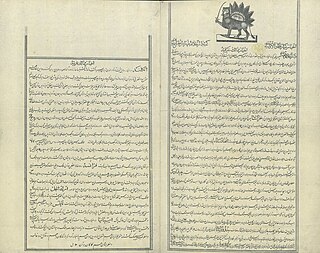
Kaghaz-e Akhbar was a monthly newspaper published in Qajar Iran.
References
- ↑ Nissimov, Miriam (2022). "Jews in early 20th Century Iran: the path to the community's politicization". Journal of Modern Jewish Studies: 1. doi:10.1080/14725886.2022.2090237.
- ↑ Sarshar, Houman (2009). "JUDEO-PERSIAN COMMUNITIES i. INTRODUCTION". In Yarshater, Ehsan (ed.). Encyclopædia Iranica, Volume XV/1: Joči–Judeopersian communities of Iran V. Qajar period (1786-1925). London and New York: Routledge & Kegan Paul. pp. 89–90. ISBN 978-1-934283-14-1.